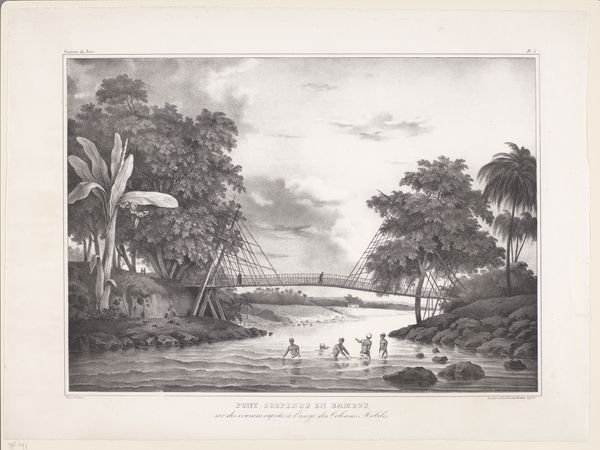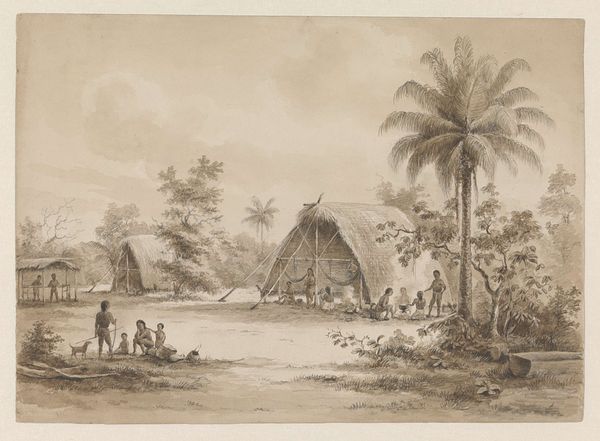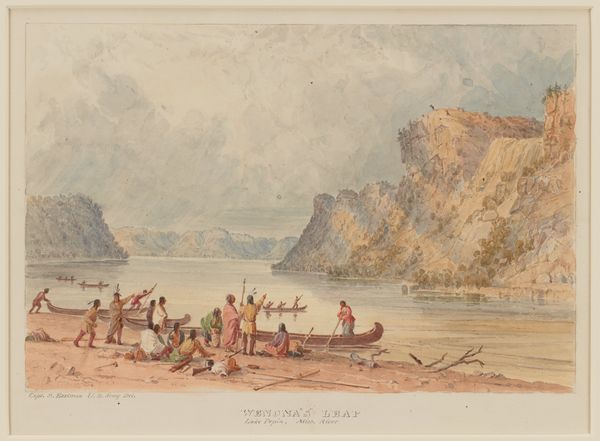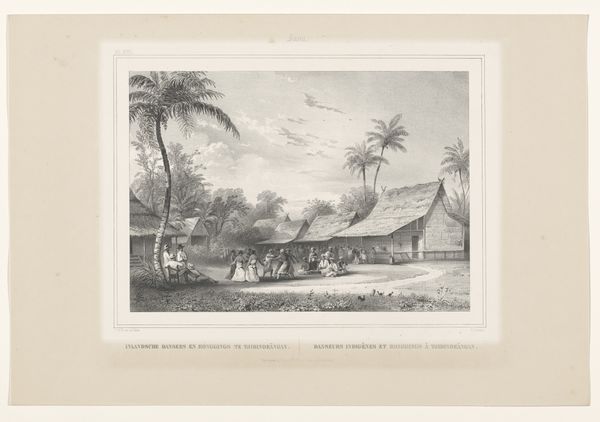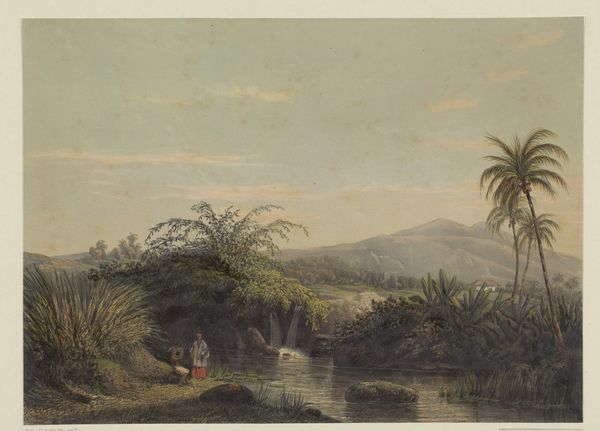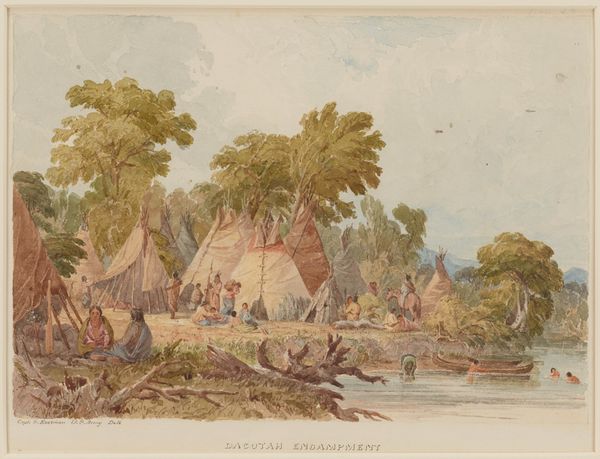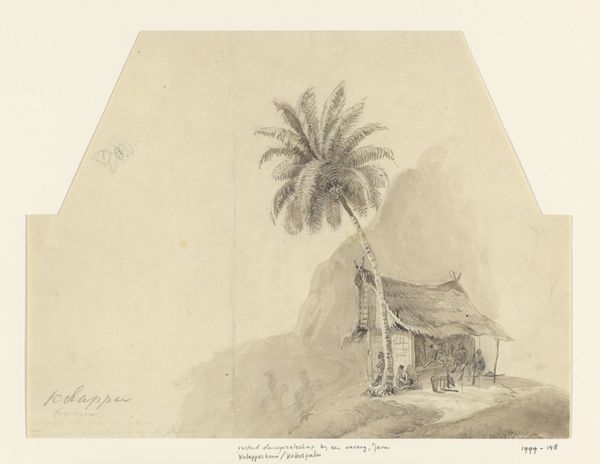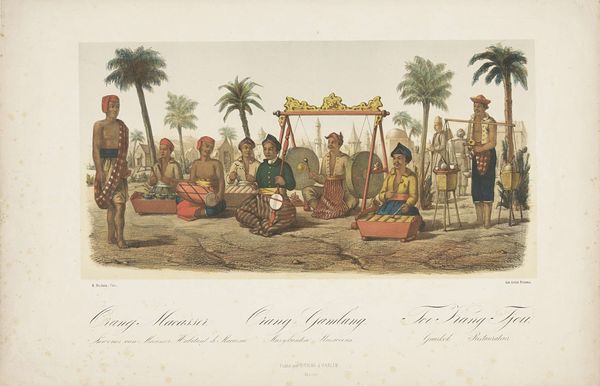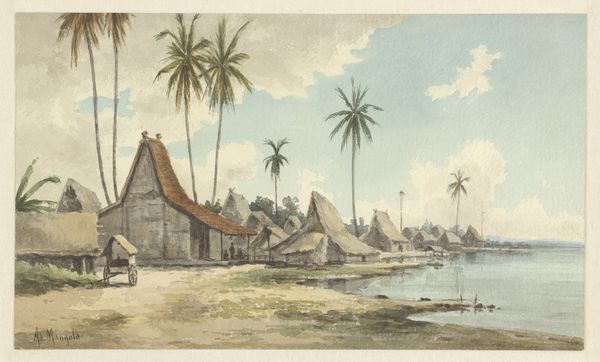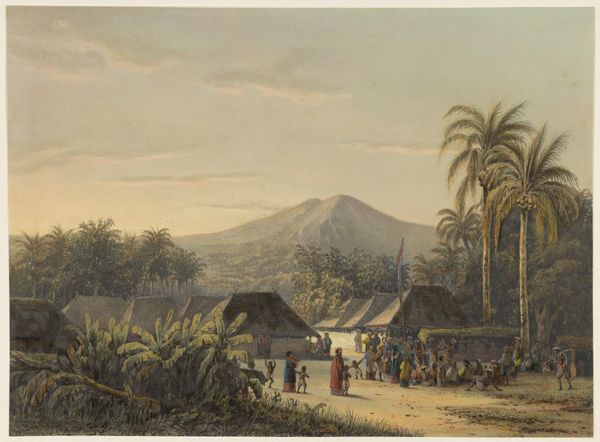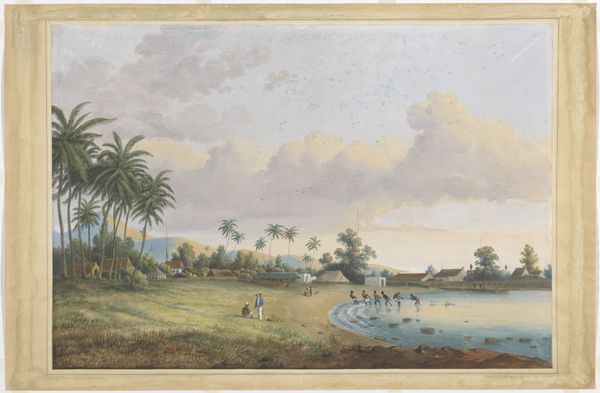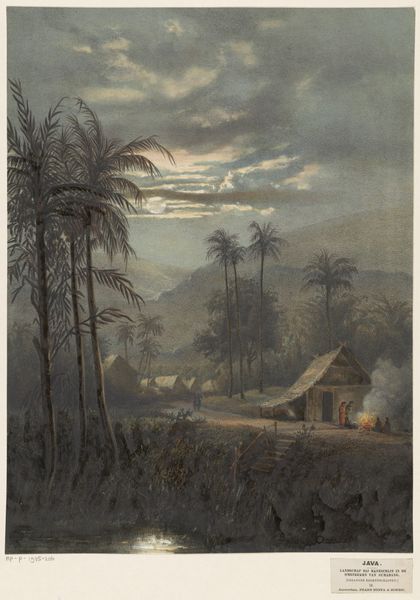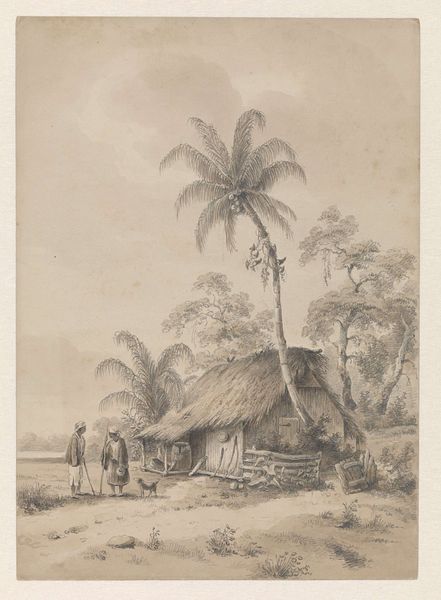
Gezicht op een nederzetting van de oostkust van Workai, Aru-eilanden, Zuidoost-Molukken Possibly 1824
0:00
0:00
watercolor
#
landscape
#
indigenism
#
watercolor
#
romanticism
#
orientalism
#
genre-painting
#
watercolor
Dimensions: height 320 mm, width 568 mm
Copyright: Rijks Museum: Open Domain
Curator: This watercolor by Adrianus Johannes Bik, potentially from 1824, depicts a settlement on the east coast of Workai, part of the Aru Islands in Southeast Maluku. Editor: It’s immediately striking how muted the palette is. The washes of color are very soft, creating an almost dreamlike quality despite the ostensibly documentary nature of the scene. Curator: Indeed. The painting operates within a complicated framework of Orientalism and Romanticism, attempting to capture an “authentic” indigenous life, yet inevitably filtered through a Western lens. How does Bik's representation of the people on the beach speak to those tensions? Editor: I notice that figures on the beach seem carefully positioned, almost like set pieces within a stage production. Their stillness and relative isolation invite contemplation of the artist’s perspective rather than their lived experiences. Curator: Precisely. Consider also the broader colonial context. Paintings like this often served to legitimize colonial presence and control, presenting the colonized lands as exotic, passive, and ripe for exploitation. It also adopts, and adapts, the aesthetics of Indigenism. Editor: The composition itself seems to reinforce a kind of distance. The artist places us at a remove, observing from a safe distance, emphasizing the picturesque quality of the scene. This is underscored by Bik’s deliberate play with light and shadow. Curator: And the genre-painting aspects invite viewers to engage with constructed social narratives rather than an unbiased document. The clothing is used to emphasize an alleged cultural disparity and difference. Editor: The attention to detail, despite the soft application of watercolor, is rather skilled. The way he captures the light reflecting off the water and the textures of the natural environment—rock, foliage—suggests a rigorous formal training informing the overall composition. Curator: This artwork provides a fascinating, albeit problematic, glimpse into a specific moment in colonial history, offering insight into both the depicted culture and the power dynamics inherent in its representation. Editor: I agree, and a close analysis of his visual choices helps unpack how Bik conveys certain attitudes of his time.
Comments
No comments
Be the first to comment and join the conversation on the ultimate creative platform.
